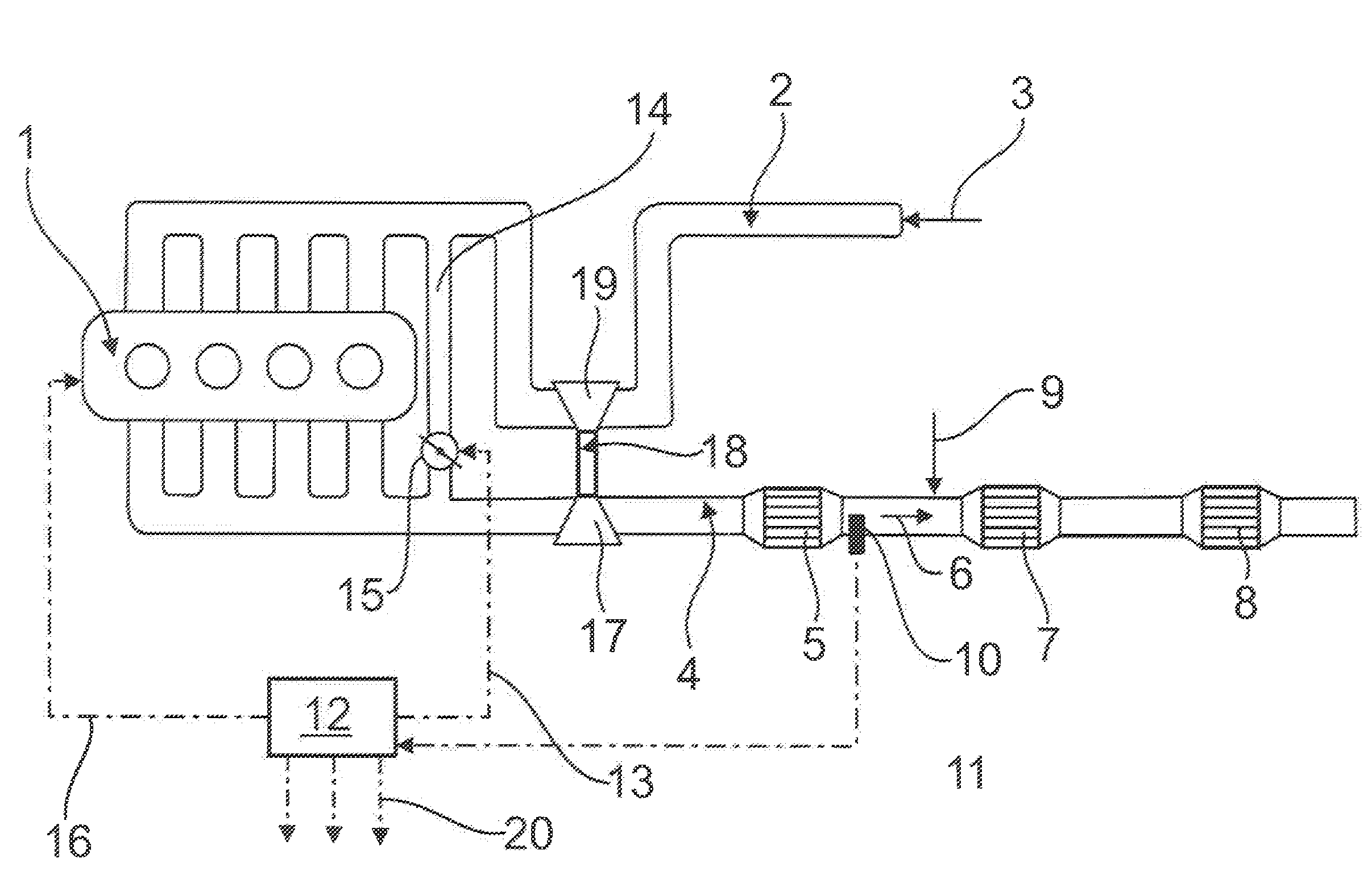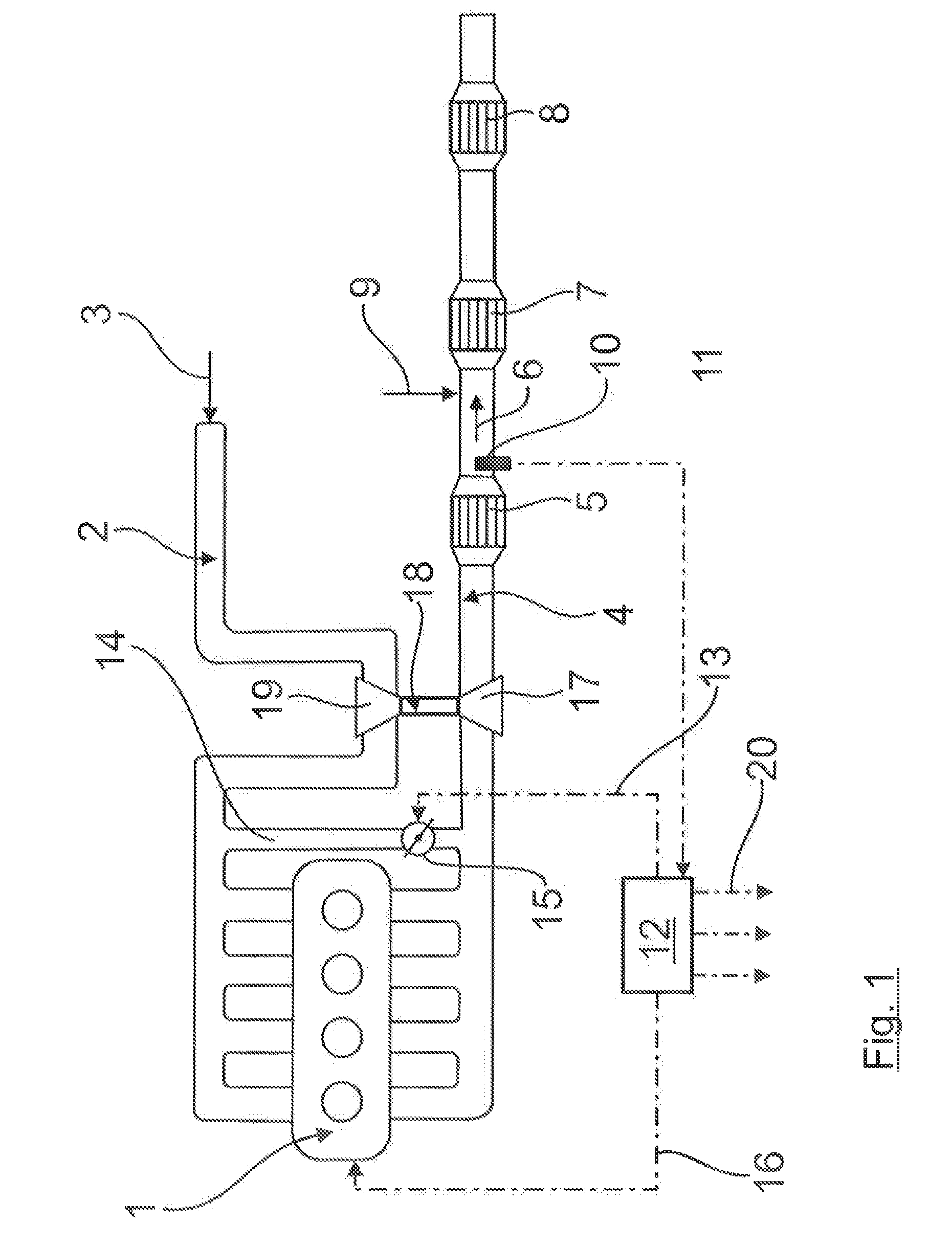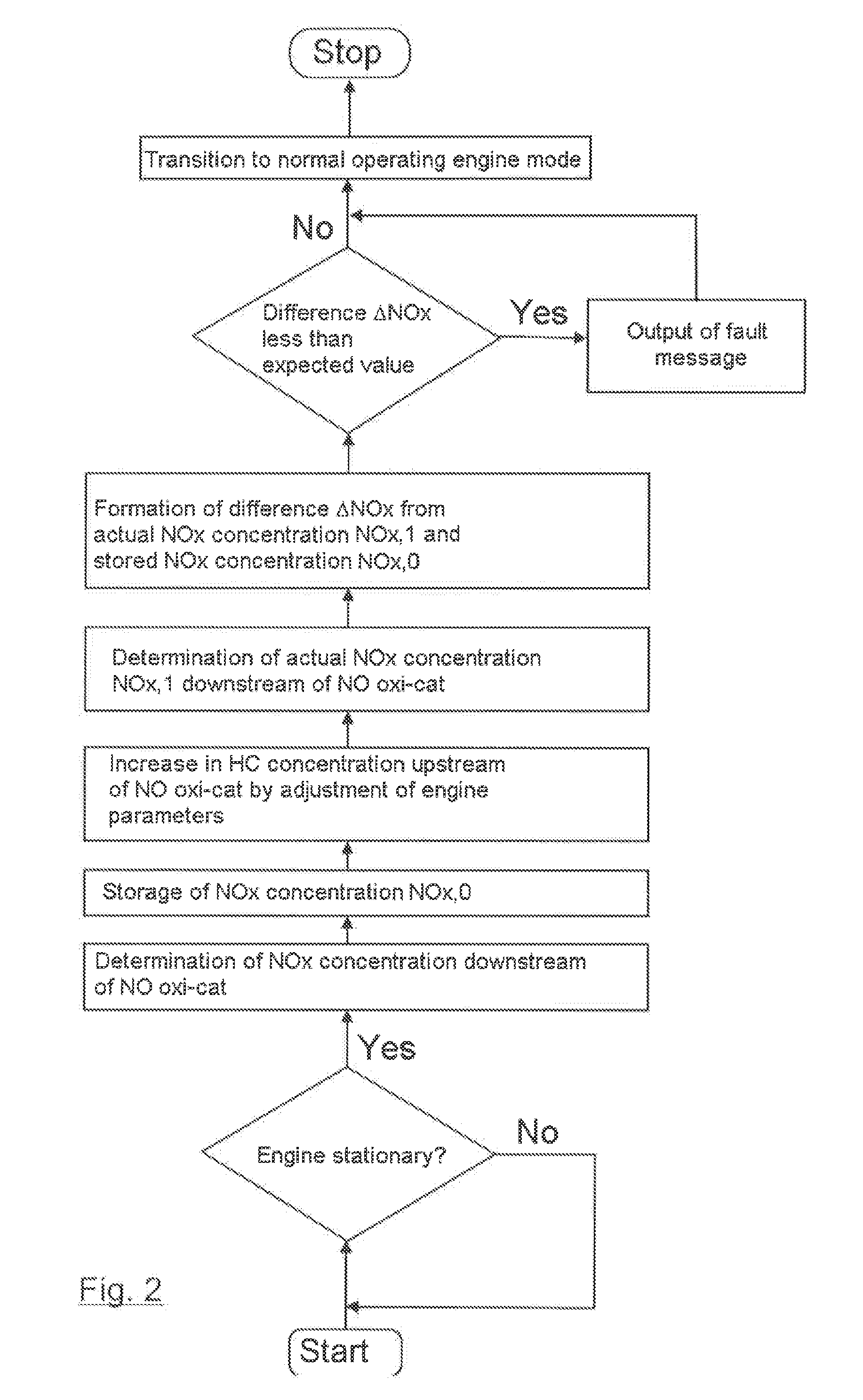Method and device for testing the function capacity of an no oxidation catalyst
a technology of no oxidation catalyst and function, which is applied in the direction of mechanical equipment, machines/engines, instruments, etc., can solve the problems of unsatisfactory large quantities, fall in activity, and reduce the activity of downstream exhaust gas post-treatment components such as scr catalysts or particulate filters, and achieve high function reliability
- Summary
- Abstract
- Description
- Claims
- Application Information
AI Technical Summary
Benefits of technology
Problems solved by technology
Method used
Image
Examples
Embodiment Construction
[0037]FIG. 1 shows an internal combustion engine 1 to which charge air 3 is supplied via a charge air line 2. From the internal combustion engine 1 an exhaust gas pipe 4 leads to an NO oxidation catalyst 5, which is followed in the flow direction 6 by an SCR catalyst 7. In the flow direction 6 after the SCR catalyst 7 is arranged a particulate filter 8. In the flow direction before the SCR catalyst 7, an arrow 9 indicates the metered addition of a reducing agent, for example an aqueous ammonia solution. Slightly further upstream, an NOx measurement device 10 is arranged in the exhaust pipe 4 and connected with a control device 12 via a signal line 11. The control device 12 is also connected via line 13 with a shut-off element 15 arranged in an exhaust gas recirculation line 14 and via a further control line 16 with the internal combustion engine 1 for control purposes.
[0038]In the exhaust pipe 4 before the NO oxidation catalyst 5 is arranged an exhaust gas turbine 17 of an exhaust t...
PUM
 Login to View More
Login to View More Abstract
Description
Claims
Application Information
 Login to View More
Login to View More - R&D
- Intellectual Property
- Life Sciences
- Materials
- Tech Scout
- Unparalleled Data Quality
- Higher Quality Content
- 60% Fewer Hallucinations
Browse by: Latest US Patents, China's latest patents, Technical Efficacy Thesaurus, Application Domain, Technology Topic, Popular Technical Reports.
© 2025 PatSnap. All rights reserved.Legal|Privacy policy|Modern Slavery Act Transparency Statement|Sitemap|About US| Contact US: help@patsnap.com



